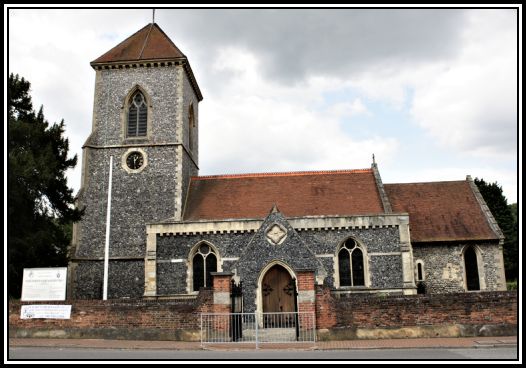THE THREE MUSKETEERS

——oooOOOooo——
KEITH BECKINGHAM

PAGE 1:
SCHOOL AND
EARLY MUSICAL TRAINING
Richard Keith Beckingham, known as Keith, was born in Amersham at the Shardloes Nursing Home on 24th June 1944 where his mother had been evacuated during the Second World War. Keith’s father was in the Royal Air Force (RAF) and had been given seven days compassionate leave in order to be with his wife at the birth.
Keith came from a musical family. His father, Richard James Beckingham, played the piano and fronted his own dance band during the 1920s and 1930s. He was also a church organist at West Wickham in Kent for thirteen years. He worked in the stationary trade and, once he retired, he taught organ and piano in his home in Keston, Kent. Keith’s mother, Muriel Beckingham, was also musically minded. She had an excellent singing voice and played the lead in many local amateur operatic productions in Beckenham, Bromley and West Wickham.
It is therefore not surprising that after being born into such an environment, Keith was naturally encouraged to develop his own musical talents. Besides receiving positive reinforcement from his parents, they also offered him constructive criticism, which as he states was very important to his development as a musician.
When he was five-years old, he attended Greenhayes Preparatory School in West Wickham in Kent. At this time, he was having piano lessons under the direction of Miss Muriel Stopes who had a fine Bechstein Grand Piano and was successful in his music examinations.
 A Bechstein Grand Piano
A Bechstein Grand Piano
By the time he was nine, his musical abilities were recognised by the headmaster who allowed him to be an accompanist at the piano at the school carol concerts. Later, at Beckenham Grammar School, when music lessons were flagging, the music master often invited Keith to play The Dam Busters March in order to wake up his classmates!
The Dam Busters’ Match conducted by Eric Coates (1886-1957)
-oOo-
Keith’s father was an experienced church organist and he slowly introduced him to organ technique. However, he did not wish his learning to play the organ to interfere with his piano tuition, and to help avoid this, it was decided that Keith would study both piano and organ with the same teacher. And so, Keith began to have Pipe Organ and piano lessons from the organist of St. Mary of Nazareth Church, West Wickham.
 St. Mary of Nazareth Church, West Wickham
St. Mary of Nazareth Church, West Wickham
The church’s Pipe Organ had a detached console with Tab Stops and was thought to have been installed previously in a cinema where a Straight Pipe Organ was used to accompany silent films prior to the introduction of the Theatre Organs produced by Wurlitzer, Christie and Compton. When Keith was about eleven years of age, the vicar asked Keith to play for mid-week services during his school holidays.
 St. Mary’s Parish Church, Addington
St. Mary’s Parish Church, Addington
A little later, when Keith was about thirteen years of age, he met Mr. John Wiltshire, the organist at Addington Parish Church and the RAF Memorial Chapel at Biggin Hill, who was also a member of both The Cinema Organ Society (COS) and The Theatre Organ Club (TOC). As Mr. Wiltshire worked as a part-time Air Traffic Controller at Biggin Hill Airfield, he invited Keith to deputise for him on those occasions when he was required to work at the airfield.
 RAF Memorial Chapel at Biggin Hill
RAF Memorial Chapel at Biggin Hill
-oOo-
In addition to his interests in the piano and the Straight Organ, Keith developed an interest in the Theatre Organ following hearing the programmes produced by BBC Radio.
——oooOOOooo——
——oooOOOooo——
——oooOOOooo——
——oooOOOooo——
Click here to read about
GRAEME WRIGHT
——oooOOOooo——
